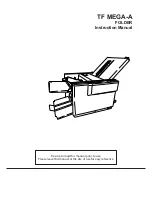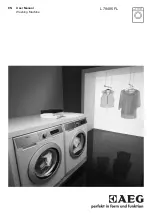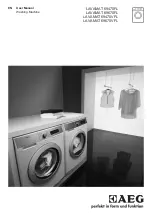
76
DARNING / EMBROIDERY FOOT
The Darning / Embroidery Foot is used for repairing holes or
torn areas, free-motion embroidery, creating monograms and
stipple quilting.
MACHINE PREPARATION
5HPRYH WKH SUHVVHU IRRW DQG SUHVVHU IRRW KROGHU
Disengage the feed dogs.
6WDUW ZLWK WKH QHHGOH LQ LWV KLJKHVW SRVLWLRQ 6ORZO\ ORZHU
the needle until it is about halfway down, which will make it
easier to attach the foot. Attach the Darning / Embroidery
Foot to the pressure bar. Be sure the arm at the top of the
presser foot is resting on the needle bar.
7KUHDG WKH PDFKLQH 5HGXFH WKH XSSHU WKUHDG WHQVLRQ
slightly.
$SSO\ VWDELOL]HU WR WKH EDFN RI WKH IDEULF IROORZLQJ
manufacturer’s recommendations. Place fabric in a hoop,
which makes it easier to handle the fabric as you sew.
Lower the presser foot. Sew.
DARNING
1. Set the sewing machine to Straight Stitch. Hoop the fabric.
Draw up the bobbin thread, then hold the bobbin and
QHHGOHWKUHDG¿UPO\DV\RXEHJLQWRVHZ
2. Sew over the torn area while guiding the fabric back and
forth in even movements. Once the area has been covered
with stitches, leave the needle down, turn the fabric 90°
and repeat the process.
FREE-MOTION EMBROIDERY AND MONOGRAMMING
1. Select ZigZag Stitch, with a medium width setting. It is not
necessary to set stitch length, as this is determined by
sewing speed along with the fabric movement.
2. Use a non-permanent fabric marking tool to draw the
design or monogram on the fabric surface.
3. Sew at a fast speed while guiding the fabric moderately
slowly.
STIPPLE QUILTING
1. Select straight stitch. It is not necessary to set stitch
length, as this is determined by sewing speed and fabric
movement.
2. Place the top fabric, batting and backing fabric together.
Pin baste to secure them for sewing.
3. Sew in a meandering fashion, joining the fabric layers
together as you sew.















































